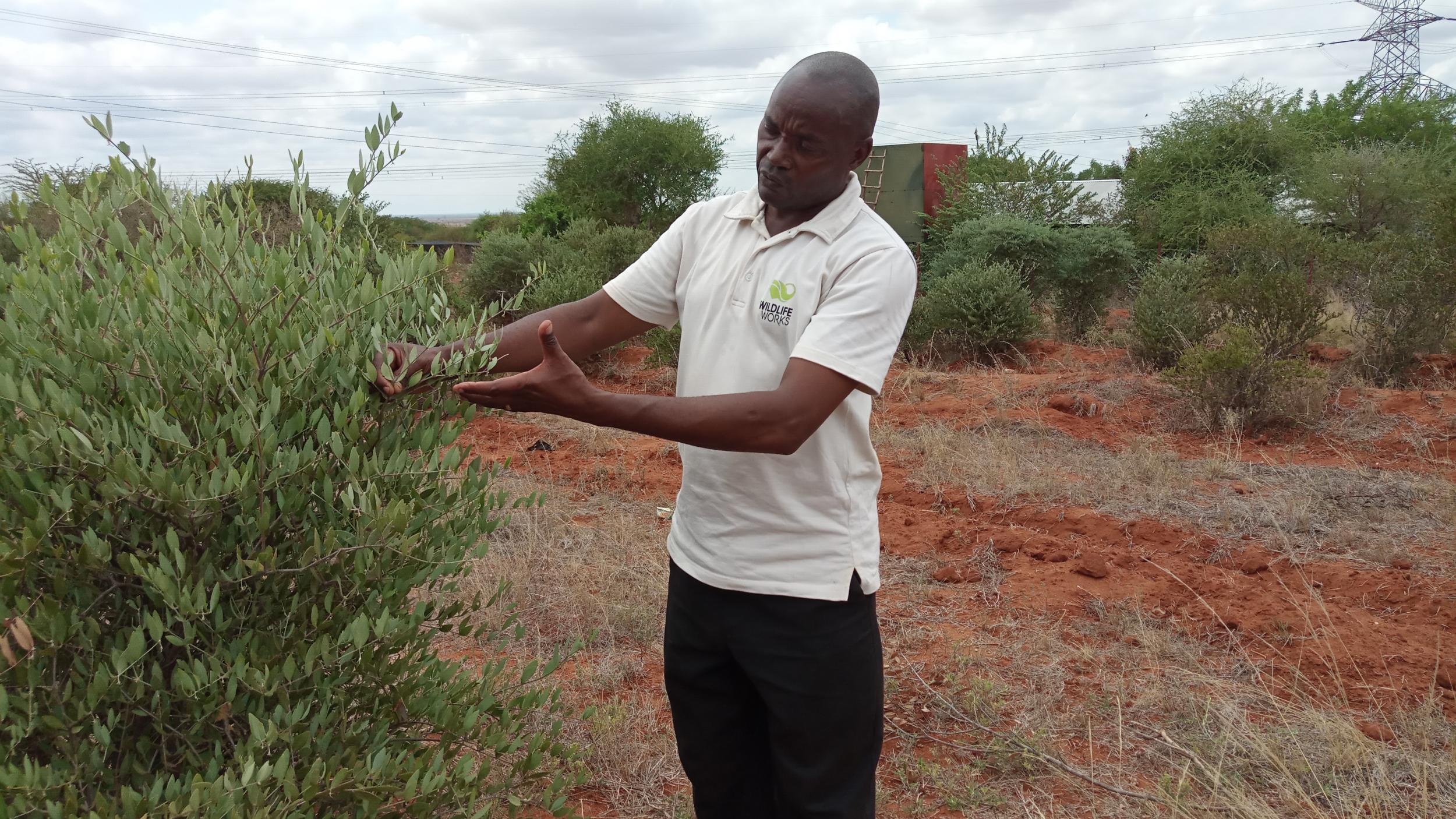Is jojoba the answer to human-wildlife conflict in Africa?
The oil-rich plant, besides its economic value and ability to thrive in arid areas, is now pegged to help reduce clashes over resources

By Evelyn Makena for People Daily in Kenya
Rows of jojoba plants shine defiantly across the intensely hot and arid landscape of Rukinga Wildlife Sanctuary near the town of Voi in southeastern Kenya. Attractive, dense and perennially green, jojoba plants stick out amid dry grasslands and rumbling woodlands of the 80,000-acre sanctuary between the famous Tsavo national parks.
The sanctuary, hosting a seven-acre plantation of jojoba (one of the largest and oldest in East Africa), lies along an important migratory corridor where hundreds of elephants seasonally traverse between Kenya’s largest parks.
Regularly, the elephants stray into neighbouring farms causing extensive damage to crops and injury to humans. Now, these woody jojoba bushes mark the frontline of an experiment that could significantly reduce the rampant human wildlife conflict.
Jojoba, a drought resistant shrub native to Mexico, was first introduced into Kenya by Rukinga ranching company farm in 1984. It is grown for its exceptionally high quality oil, used as an additive in cosmetic products, pharmaceutical industry, weight reduction in livestock and as a motor vehicle lubricant.
Despite the Rukinga plantation having great potential for liquid wax production, it was neglected until 2014. Wildlife Works, a conservation organisation that has since taken over its management since 1998, believes that jojoba can be commercially grown to replace common food crops such as maize and beans that are destroyed by wild animals.
Unlike food crops such as maize or beans, jojoba is not eaten by wild animals.
“It’s a non-conflict crop with elephants. When eaten by humans or animals, jojoba suppresses appetite, a natural mechanism by the plant to prevent people and animals from eating it,” says Jamie Hendriksen, Director of Regional Operations, Wildlife Works. “Animals have a few bites and when they do not feel hungry after eating it extensively, they leave it alone.”
Save for a few shrubs destroyed by natural causes, the plantation has remained intact more than 30 years after it was first planted. Jojoba flourishes in arid conditions, making it ideal for Tsavo, where rainfall is low.
It has a tap root that can go down to 100ft to get moisture and they can survive up to two years of drought and are evergreen; however, they don’t grow or produce berries during drought.
The crop is propagated through seed, tissue culture or rooted cuttings. It starts bearing seeds after three years and achieves its full yield capacity after 12 years. It’s a dioecious shrub, meaning that male and female flowers do not grow on the same plant.
“For increased yields the ratio of the female to male should be higher since the male can pollinate multiple plants. Ideally there should be a ratio of one to seven.” says George Thurrtbi, Agribusiness and Forestry Manager, Wildlife Works.
One can tell the gender of the plant by looking at the shape of the flowers. Once the female plant is wind pollinated it produces a green capsule enclosing up to three seeds. The oval shaped seeds slightly bigger than a coffee berry fall on the ground when ripe.
Under good management a female jojoba plant has the potential to produce up to three kilograms of seeds. One kilogram produces half a litre of oil, which is seen to have huge economic potential only equated in value to that of sperm whale oil.
Being a relatively rare crop, it took years of research before Wildlife Works could figure out how to commercially grow it, how the oil is processed and the markets available.
In 2014, the organisation bought a jojoba oil-pressing machine and since then, it produces 50 litres of oil, each retailing at £40. The firm also uses the oil to make soaps under an enterprise that employs five local women.
“We have found demand for the crop both locally and internationally. There is higher demand for the oil than we can supply,“ says Thumbi, adding that to increase the yields of the plantation, they are planting more jojoba through vegetative propagation to ensure there are more females than males.
While jojoba can survive under high temperatures, extreme heat stresses it and causes the bud to abort, affecting the yields. It also needs constant supply of water. As part of the efforts to rehabilitate the plantation, Wildlife Works is experimenting with supplementary irrigation on one acre of the farm during extremely dry seasons. Depending on its effectiveness, irrigation will be expanded to cover the whole plantation.
If the jojoba performs well, the small berry could potentially help communities living around Tsavo improve livelihoods, protect the environment and tackle human wildlife conflict. Through irrigation, Wildlife Works hopes to increase the production capacity from 50 litres to 2,000 per year. Jojoba plants could bring farmers that suffer perennial destruction of crops by wild animals and recurrent droughts out of their misery.
The trees require little investment in terms of fertiliser and labour and produce twice a year in March and October, providing relatively easy source of income. Besides, Jojoba oil has ready markets with the highest demand coming from the US.

This article is reproduced here as part of the Giants Club African Conservation Journalism Fellowships, a programme of the charity Space for Giants and supported by the owner of ESI Media, which includes independent.co.uk. It aims to expand the reach of conservation and environmental journalism in Africa, and bring more African voices into the international conservation debate. Read the original story here.

Join our commenting forum
Join thought-provoking conversations, follow other Independent readers and see their replies